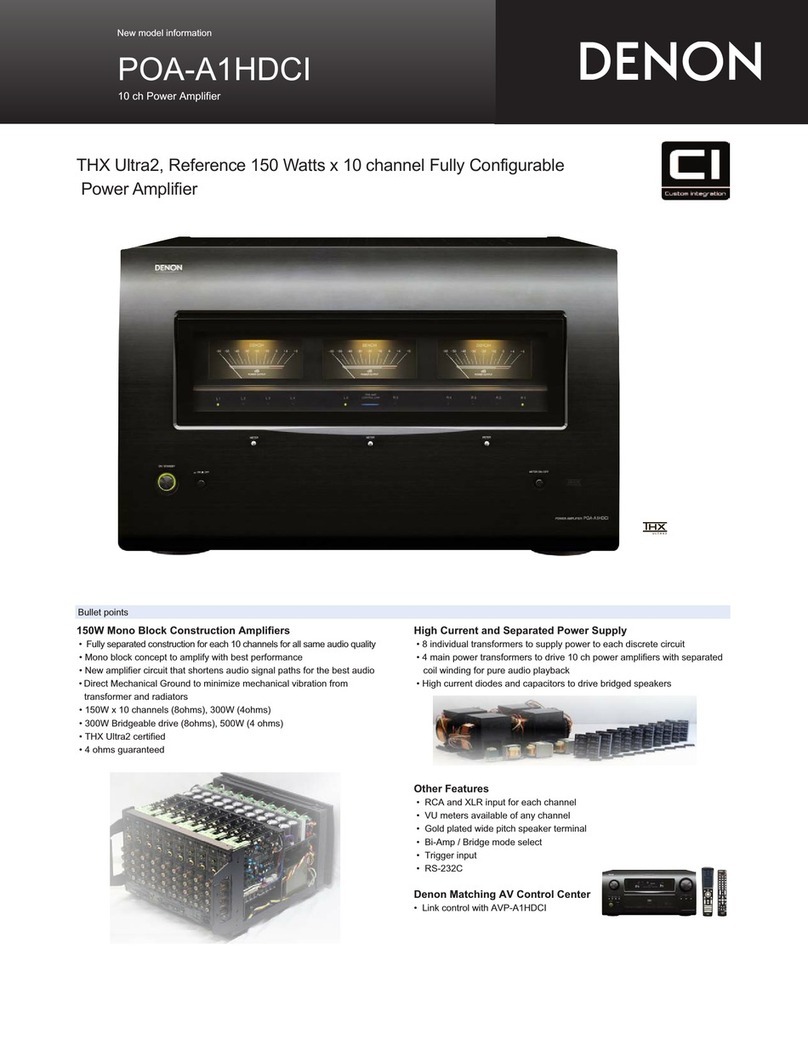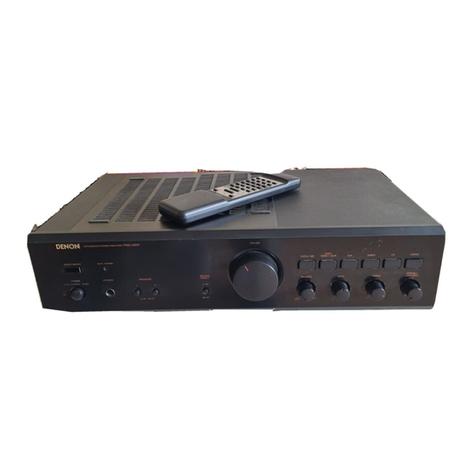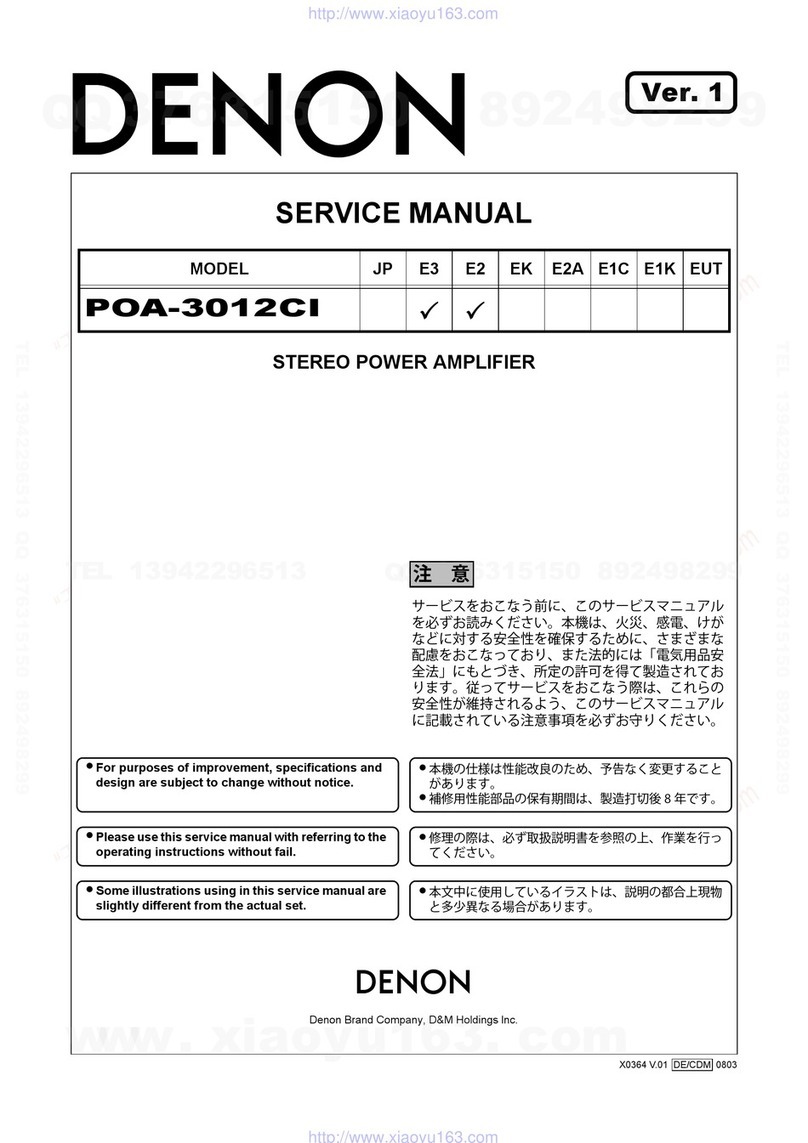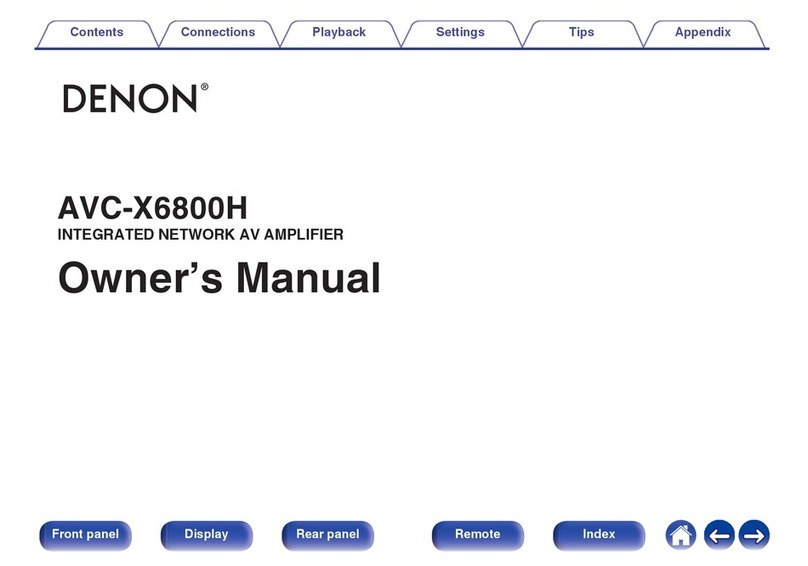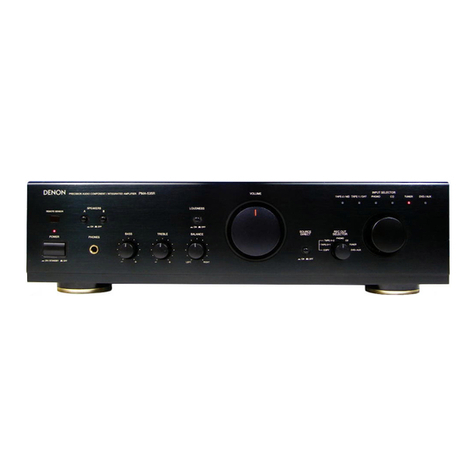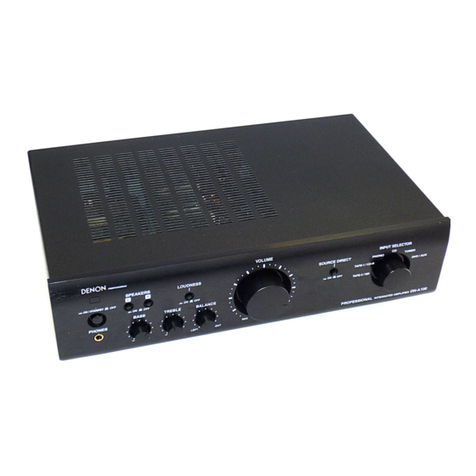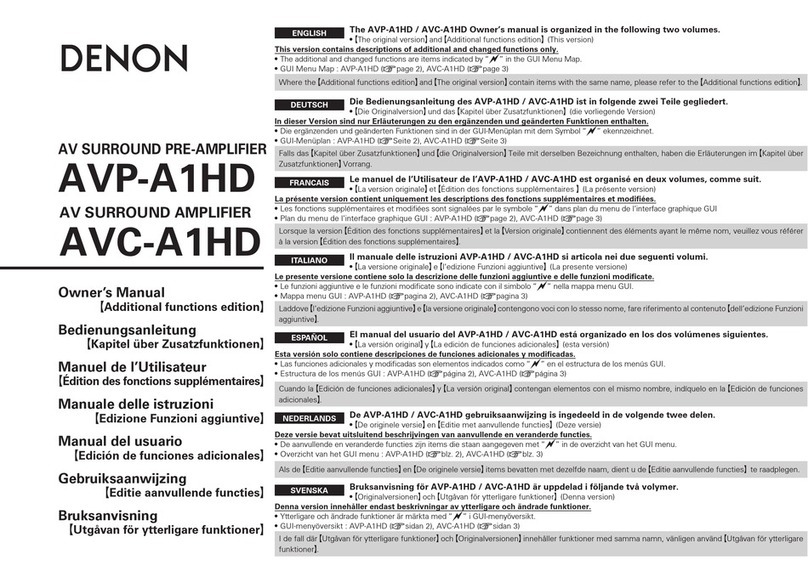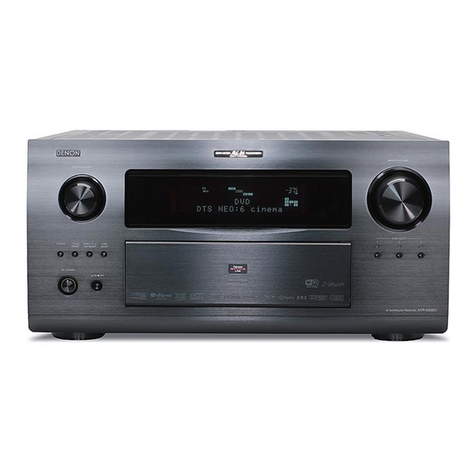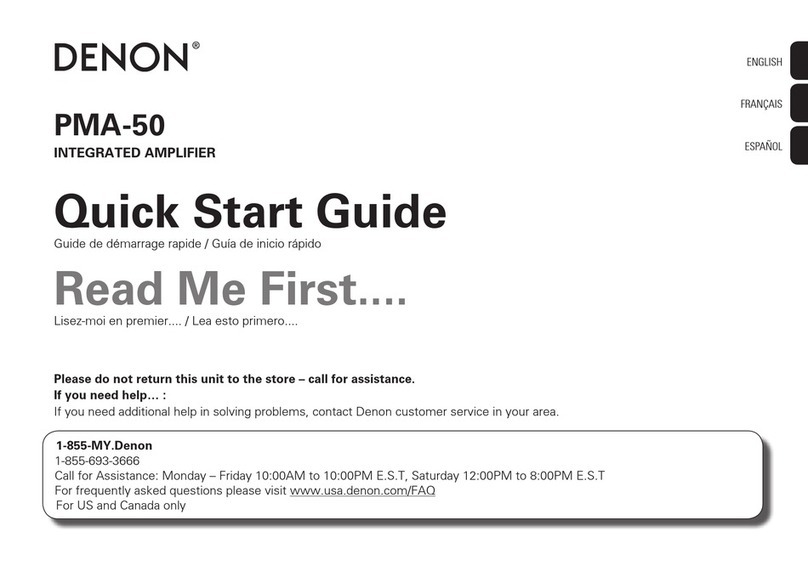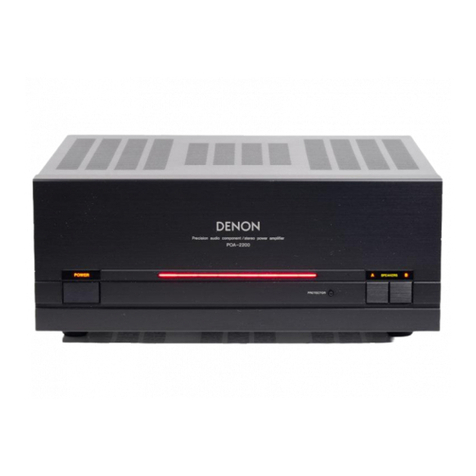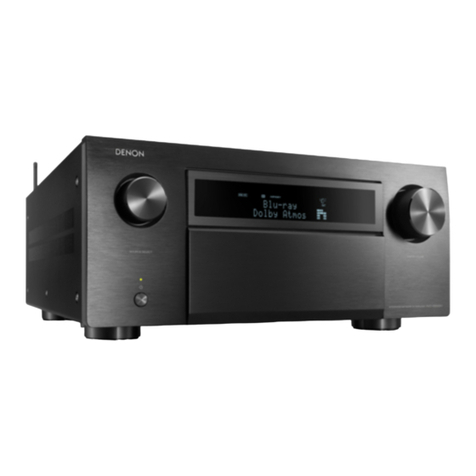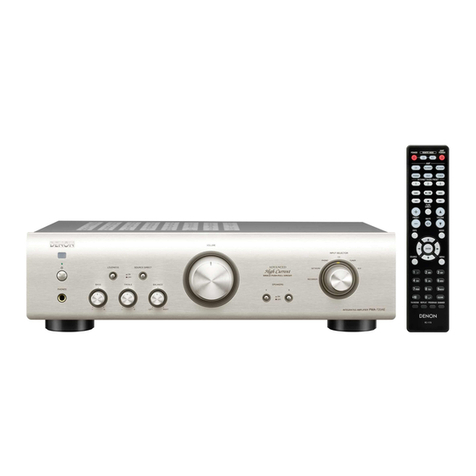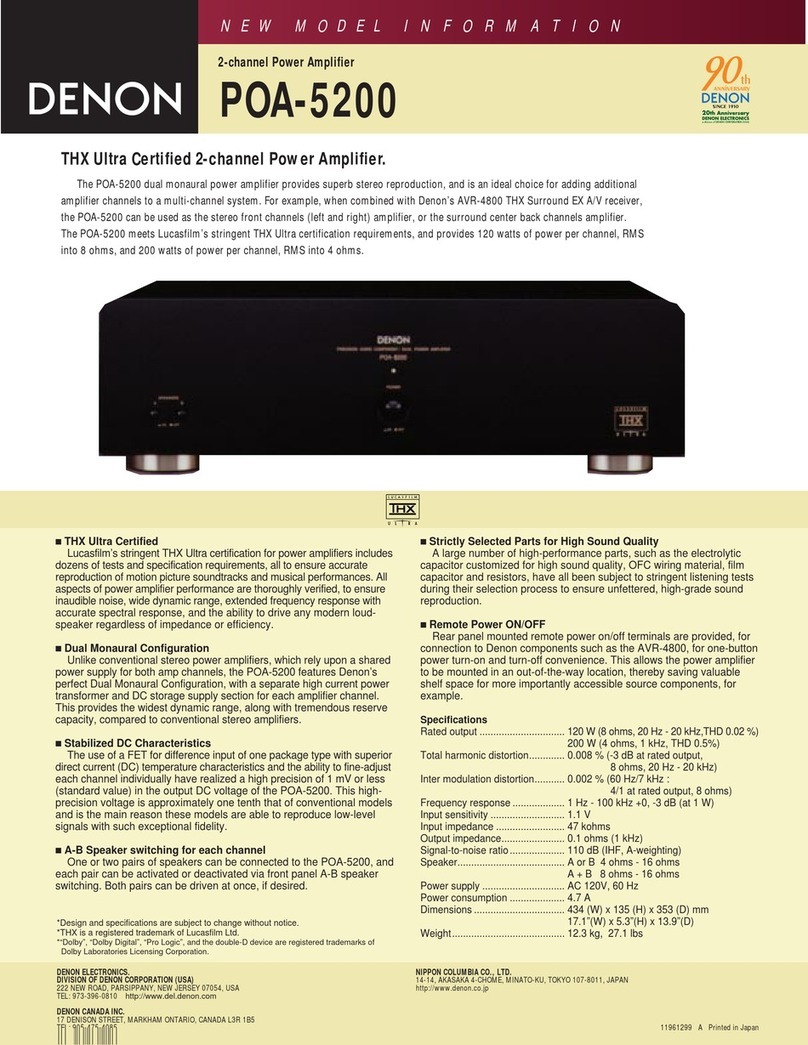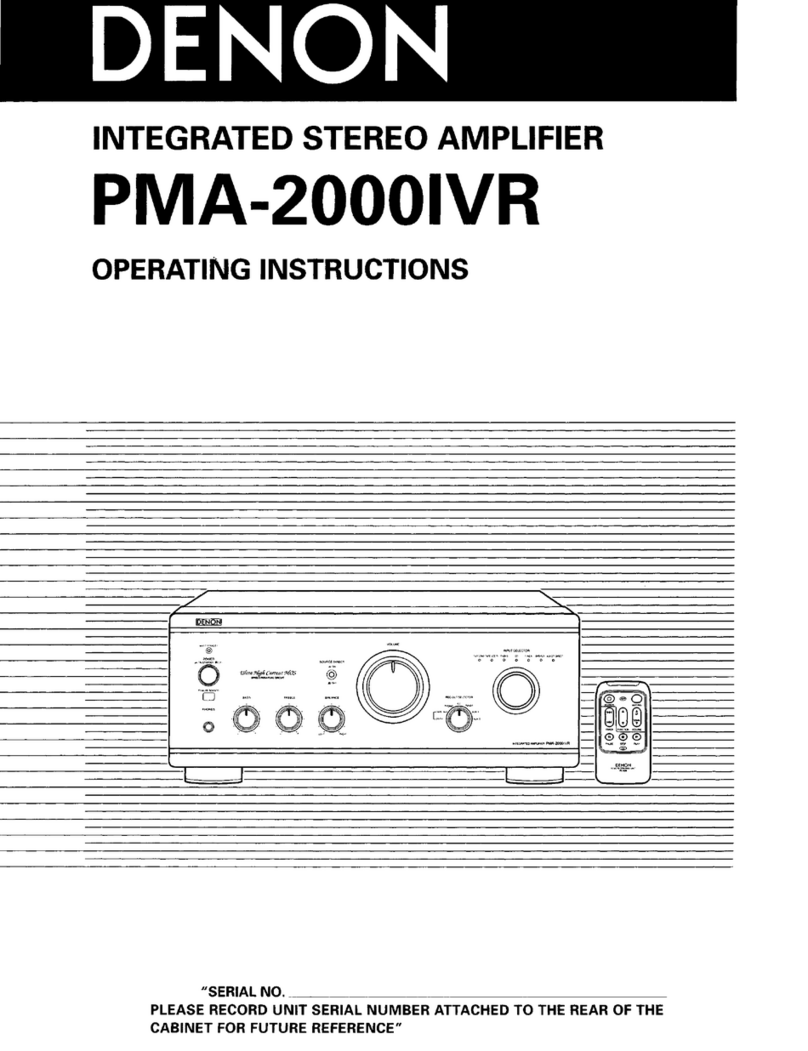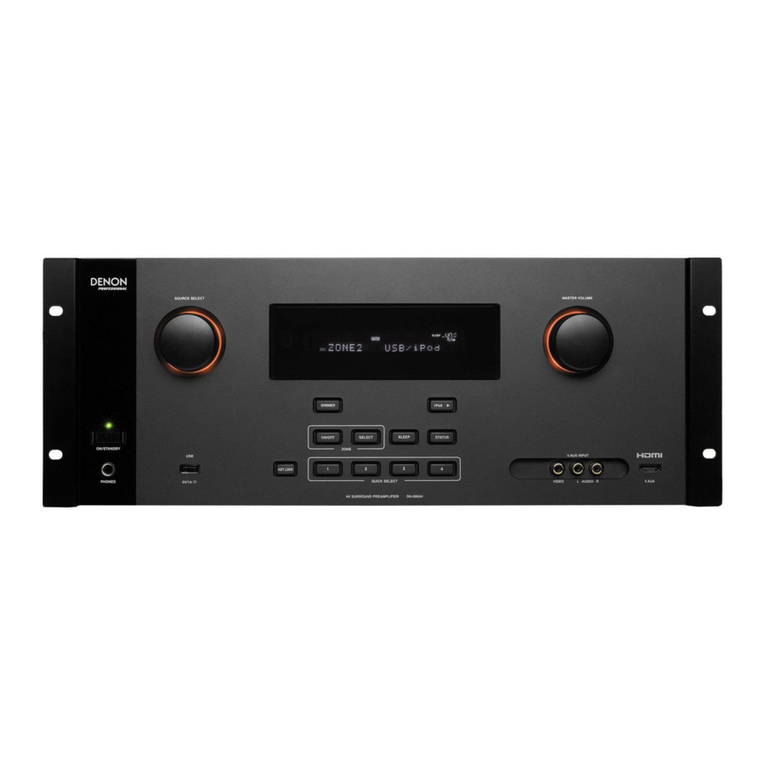
6
ENGLISH DEUTSCH FRANCAIS ITALIANO ESPAÑOL NEDERLANDS SEVENSKA PORTUGUÊS
— TABLE OF CONTENTS —
DESIGNATIONS AND FUNCTIONS OF
PANEL CONTROLS. . . . . . . . . . . . . . . . . . . . . . . 7, 8, 9
CONNECTIONS. . . . . . . . . . . . . . . . . . . . . . . . . . . 9, 10
OPERATION . . . . . . . . . . . . . . . . . . . . . . . . . . . . . . . .11
REMOTE CONTROL OPERATION . . . . . . . . . . . 12, 13
TROUBLESHOOTING . . . . . . . . . . . . . . . . . . . . . . . . 14
SPECIFICATIONS . . . . . . . . . . . . . . . . . . . . . . . . . . . 15
Please check to make sure the following items are included
with the main unit in the carton:
(1) Operating Instructions. . . . . . . . . . . . . . . . . . . . . . . . . . . . . . . .1
(2) Remote Control Unit (RC-885) . . . . . . . . . . . . . . . . . . . . . . . . .1
(3) Batteries R6P (AA) . . . . . . . . . . . . . . . . . . . . . . . . . . . . . . . . . .2
(4) Power Supply Cord . . . . . . . . . . . . . . . . . . . . . . . . . . . . . . . . . .1
(5) Service Station List . . . . . . . . . . . . . . . . . . . . . . . . . . . . . . . . . .1
— INHALT —
BEZEICHNUNGEN UND FUNKTIONEN DER
BEDIENUNGSELEMENTE . . . . . . . . . . . . . . . . . 16, 17
ANSCHLÜSSE. . . . . . . . . . . . . . . . . . . . . . . . . . . 18, 19
BETRIEB . . . . . . . . . . . . . . . . . . . . . . . . . . . . . . . . . . 20
FERNBEDIENUNG . . . . . . . . . . . . . . . . . . . . . . . 21, 22
FEHLERSUCHE. . . . . . . . . . . . . . . . . . . . . . . . . . . . . 23
TECHNISCHE DATEN . . . . . . . . . . . . . . . . . . . . . . . . 24
Bitte überprüfen Sie, ob die folgenden Teile vollständig in der
Verpackung enthalten sind:
(1) Bedienungsanleitung . . . . . . . . . . . . . . . . . . . . . . . . . . . . . . . .1
(2) Fernbedienung (RC-885) . . . . . . . . . . . . . . . . . . . . . . . . . . . . .1
(3) Batterien vom Typ R6P (AA). . . . . . . . . . . . . . . . . . . . . . . . . . .2
(4) Netzkabel . . . . . . . . . . . . . . . . . . . . . . . . . . . . . . . . . . . . . . . . .1
(5) Servicestation-Liste. . . . . . . . . . . . . . . . . . . . . . . . . . . . . . . . . .1
— TABLE DES MATIERES —
NOMENCLATURE ET FONCTIONS DES
COMMANDES DE PANNEAU . . . . . . . . . . . . . . . 25, 26
CONNEXIONS . . . . . . . . . . . . . . . . . . . . . . . . . . . 27, 28
FONCTIONNEMENT . . . . . . . . . . . . . . . . . . . . . . . . . 29
UTILISATION DE LA TELECOMMANDE. . . . . . . 30, 31
DEPISTAGE DES PANNES . . . . . . . . . . . . . . . . . . . . 32
SPECIFICATIONS . . . . . . . . . . . . . . . . . . . . . . . . . . . 33
Veuillez contrôler que les articles suivants sont bien joints à
l’appareil principal dans le carton:
(1) Mode d’emploi. . . . . . . . . . . . . . . . . . . . . . . . . . . . . . . . . . . . . .1
(2) Unité de télécommande (RC-885) . . . . . . . . . . . . . . . . . . . . . .1
(3) Piles R6P (AA) . . . . . . . . . . . . . . . . . . . . . . . . . . . . . . . . . . . . .2
(4) Cordon secteur . . . . . . . . . . . . . . . . . . . . . . . . . . . . . . . . . . . . .1
(5) Liste des stations techniques agréees . . . . . . . . . . . . . . . . . . .1
— INDICE —
DESIGNAZIONE E FUNZIONAMENTO
DEI CONTROLLI DEL PANNELLO . . . . . . . . . . . 34, 35
CONNESSIONI . . . . . . . . . . . . . . . . . . . . . . . . . . 36, 37
FUNZIONAMENTO . . . . . . . . . . . . . . . . . . . . . . . . . . 38
FUNZIONAMENTO DEL TELECOMANDO . . . . . 39, 40
LOCALIZZAZIONE DEI GUASTI . . . . . . . . . . . . . . . . 41
SPECIFICAZIONI. . . . . . . . . . . . . . . . . . . . . . . . . . . . 42
Controllare che le parti seguenti si trovino imballate con
l’apparecchio nella scatola di spediziione:
(1) Libretto delle istruzioni . . . . . . . . . . . . . . . . . . . . . . . . . . . . . . .1
(2) Telecomando (RC-885). . . . . . . . . . . . . . . . . . . . . . . . . . . . . . .1
(3) Batterie R6P (AA) . . . . . . . . . . . . . . . . . . . . . . . . . . . . . . . . . . .2
(4) Cavo di alimentazione. . . . . . . . . . . . . . . . . . . . . . . . . . . . . . . .1
(5) Lista delle stazioni di servizio . . . . . . . . . . . . . . . . . . . . . . . . . .1
1
2
3
4
5
6
1
2
3
4
5
6
1
2
3
4
5
6
1
2
3
4
5
6
— INDICE —
FUNCIONES Y DENOMINACIONES DE
LOS CONTROLES DE PANEL . . . . . . . . . . . . . . 43, 44
CONEXIONES . . . . . . . . . . . . . . . . . . . . . . . . . . . 45, 46
OPERACION. . . . . . . . . . . . . . . . . . . . . . . . . . . . . . . . 47
OPERACION A CONTROL REMOTO . . . . . . . . . 48, 49
ANTES DE SOLICITAR REPARACIONES . . . . . . . . . 50
ESPECIFICACIONES. . . . . . . . . . . . . . . . . . . . . . . . . 51
Por favor verifique asegurandose de que los siguientes artícu-
los son empacados en la caja pero separados de la unidad prin-
cipal.
(1) Manual de instrucciones . . . . . . . . . . . . . . . . . . . . . . . . . . . . . .1
(2) Unidad de control remoto (RC-885) . . . . . . . . . . . . . . . . . . . . .1
(3) Pilas R6P (AA) . . . . . . . . . . . . . . . . . . . . . . . . . . . . . . . . . . . . .2
(4) Cable de alimentación . . . . . . . . . . . . . . . . . . . . . . . . . . . . . . .1
(5) Lista de estaciones de servicio . . . . . . . . . . . . . . . . . . . . . . . . .1
— INHOUD —
BENAMINGEN EN FUNKTIES VAN DE
BEDIENINGSORGANEN OP HET
VOORPANEEL . . . . . . . . . . . . . . . . . . . . . . . . . . . 52, 53
AANSLUITINGEN . . . . . . . . . . . . . . . . . . . . . . . . . 54, 55
BEDIENING . . . . . . . . . . . . . . . . . . . . . . . . . . . . . . . . 56
WERKING AFSTANDSBEDIENING . . . . . . . . . . . 57, 58
IN GEVAL VAN PROBLEMEN . . . . . . . . . . . . . . . . . . 59
TECHNISCHE GEGEVENS . . . . . . . . . . . . . . . . . . . . 60
Kontroleer of de volgende accessoires bij het hoofdtoestel in
de doos zijn verpakt:
(1) Gebruiksaanwijzing. . . . . . . . . . . . . . . . . . . . . . . . . . . . . . . . . .1
(2) Afstandsbediening (RC-885). . . . . . . . . . . . . . . . . . . . . . . . . . .1
(3) Batterijen R6P (AA). . . . . . . . . . . . . . . . . . . . . . . . . . . . . . . . . .2
(4) Netsnoer . . . . . . . . . . . . . . . . . . . . . . . . . . . . . . . . . . . . . . . . . .1
(5) Ligst van service-centra . . . . . . . . . . . . . . . . . . . . . . . . . . . . . .1
— INNEHÅLL —
BETECKNINGAR OCH FUNKTIONER HOS
KONTROLLERNA PÅ FRONTPANELEN . . . . . . . 61, 62
ANSLUTNINGAR . . . . . . . . . . . . . . . . . . . . . . . . . 63, 64
MANÖVRERING. . . . . . . . . . . . . . . . . . . . . . . . . . . . . 65
FJÄRRKONTROLLEN . . . . . . . . . . . . . . . . . . . . . 66, 67
FELSÖKNING. . . . . . . . . . . . . . . . . . . . . . . . . . . . . . . 68
SPECIFIKATIONER . . . . . . . . . . . . . . . . . . . . . . . . . . 69
Kontrollera att följande, förutom huvudapperaten, finns med i
kartongen:
(1) Bruksanvisning . . . . . . . . . . . . . . . . . . . . . . . . . . . . . . . . . . . . .1
(2) Fjärrkontroll (RC-885) . . . . . . . . . . . . . . . . . . . . . . . . . . . . . . . .1
(3) Batterier R6P (AA) . . . . . . . . . . . . . . . . . . . . . . . . . . . . . . . . . .2
(4) Nätkable . . . . . . . . . . . . . . . . . . . . . . . . . . . . . . . . . . . . . . . . . .1
(5) Förteckning över service ställen . . . . . . . . . . . . . . . . . . . . . . . .1
— ÍNDICE —
DESIGNAÇÕES E
FUNÇÕES DOS CONTROLES DO PAINEL . . . . 70, 71
CONEXÕES . . . . . . . . . . . . . . . . . . . . . . . . . . . . . 72, 73
OPERAÇÃO . . . . . . . . . . . . . . . . . . . . . . . . . . . . . . . . 74
OPERAÇÃO DE CONTROLE REMOTO . . . . . . . 75, 76
RESOLUÇÃO DE PROBLEMAS . . . . . . . . . . . . . . . . 77
ESPECIFICAÇÕES. . . . . . . . . . . . . . . . . . . . . . . . . . . 78
Certifique-se de que as seguintes peças estão incluídas na
embalagem fora da unidade principal:
(1) Instruções de operação . . . . . . . . . . . . . . . . . . . . . . . . . . . . . .1
(2) Unidade de controle remoto (RC-885) . . . . . . . . . . . . . . . . . . .1
(3) Baterias R6P (AA). . . . . . . . . . . . . . . . . . . . . . . . . . . . . . . . . . .2
(4) Cabo de alimentação de corrente. . . . . . . . . . . . . . . . . . . . . . .1
(5) Lista das esações de reparação . . . . . . . . . . . . . . . . . . . . . . . .1
1
2
3
4
5
6
1
2
3
4
5
6
1
2
3
4
5
6
1
2
3
4
5
6


